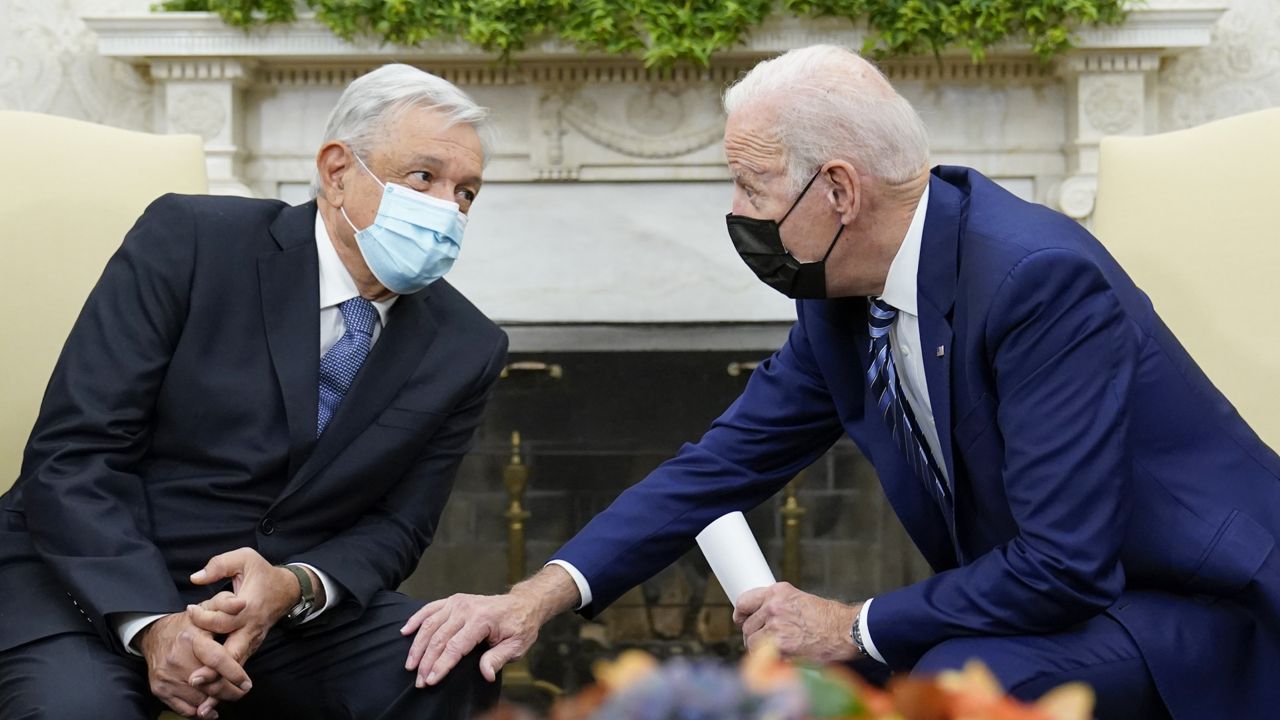[ad_1]
Signage, rescue ropes, flotation devices and emergency beacons are oft-used tools in an El Paso Sector that has recorded 42 fatalities this year
EL PASO, Texas (Border Report) – They’re called castillos, or “little castles,” and they’re one of the reasons why migrants are falling off or getting stuck atop the border wall in El Paso.
This thin wire mesh used in home construction concrete pours is being stolen by smugglers in Juarez, Mexico, and repurposed as makeshift ladders. Their ends are twisted into hooks that latch to the top of the wall while the smugglers hustle their charges up the 18- to 30-foot border barrier.
“This is what they’ll hook on top of the fence. You see how flimsy they are. Let’s say a group of 10 is trying to go over the border barrier. By the time the fifth, the sixth (migrant) goes over, it’s already flimsy. It’s not safe,” said U.S. Border Patrol Agent Orlando Marrero.

Since Oct. 1 in the El Paso Sector, more than 40 Mexicans, Central Americans and others have lost their lives from falls, dehydration and drowning while trying to enter the U.S. without authorization. This has prompted the Border Patrol to deploy life-saving mechanisms along the international boundary even as they try to process unauthorized entries, which are already at historic levels.
Signs with emergency location tags and warnings about falls have been placed on the wall itself. Cell phone towers in the desert west of El Paso allow lost migrants to press a button and call for help.
“Any little bit of advisory, messaging or word we can get out to the migrants that are coming out, we want to make sure, make it clear there’s an inherent danger with attempting to illegally enter the country,” said Carlos Rivera, a Border Patrol assistant supervisory agent. “(We’re) putting up rescue beacons, rescue placards, stickers telling the migrants, ‘Look, this is what you are going to confront.’”
The canals on the U.S. side of the wall have claimed 18 lives this year. These deaths are recorded as accidental, but border agents say transnational criminal organizations are at least partly to blame for them.
The “guides,” as the cartel footmen call themselves, tell international citizens not familiar with the U.S.-Mexico border that the canals are easy to cross. But the 16-foot-deep structures beginning in June carry millions of gallons of water to farms at speeds of 8 to 10 miles per hour, Border Patrol agents said.
“Water travels at such great velocity and powerful force – 62 pounds per square foot – so that’s water that’s carrying around 300 pounds of pressure,” Marrero said. “That represents almost no chance of survival to anyone who falls in it.”
In addition, the canals have underwater “strainers” to catch debris; people can get entangled in these underwater chain-link squares and die. And then there are the whirlpools that form on the other side of multiple floodgates along the American Canal, Marrero said.

The Border Patrol keeps several lockboxes along the canal that runs parallel to the Rio Grande. They include ropes and flotation devices that agents can toss to migrants in trouble.
But the Border Patrol – already stretched thin while responding to a record number of unauthorized entries – cannot always be there on time. Also, there have been cases of smugglers deliberately pushing migrants into the canals to create a distraction in one location so they can cross illegal drugs at another, said Marrero, who said he has witnessed one such instance with a tragic outcome.
When border agents can’t respond in time or don’t know that a migrant is in a life-threatening situation, it’s often up to his travel companions to help. The cartels consider their job done once they get a migrant into the U.S. and collect their payoff.
“The expectation is that if the migrant can’t make the call for help, if he can’t push the button on a rescue beacon, somebody will do it for him and give us an opportunity to come render aid,” Rivera said.
[ad_2]
Source link













